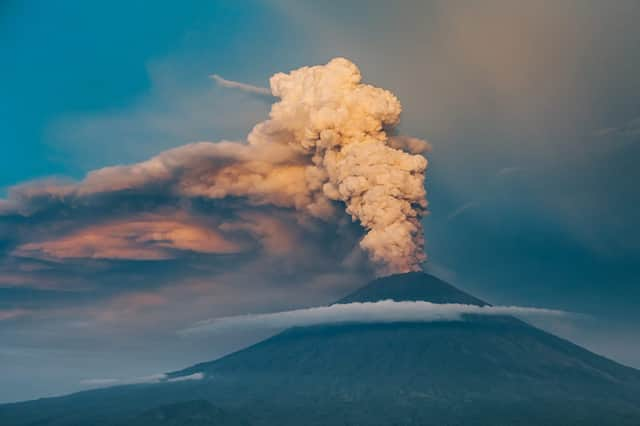Here are six volcanoes to watch out for in 2018


This article contains affiliate links. We may earn a small commission on items purchased through this article, but that does not affect our editorial judgement.
Ralf Gertisser, Keele University; Katie Preece, University of Glasgow, and Sylvain Charbonnier, University of South Florida
The eruption of Mount Agung on the island of Bali has sparked worldwide media interest, yet volcanic eruptions in Indonesia are nothing new. Of the country’s 139 “active” volcanoes, 18 currently have raised alert levels, signifying higher than normal seismic activity, ground deformation or gas emissions. On a global scale, in any week in 2017, there were at least between 14 and 27 volcanoes erupting.
Advertisement
Hide AdAdvertisement
Hide AdMost observed volcanic activity takes place along the Pacific Ring of Fire, a region around the Pacific Ocean where several tectonic plates meet, causing earthquakes and a chain of what geologists call subduction zone volcanoes. Other eruptions occur at volcanoes within continental interiors such as Ol Doinyo Lengai in Tanzania, or on oceanic islands like Hawaii. Many also take place hidden from view on the sea floor, with some of the most active underwater volcanoes located in the Tonga-Kermadec island arc in the south-west Pacific.


Spot the ring of fire.Global Volcanism Program, Smithsonian Institution
The current eruptions on land range from gentle lava effusions to moderate-sized explosions and are tiny compared to the largest in Earth’s history. Even the 1815 eruption of Mount Tambora, also in Indonesia, arguably the largest eruption in recent recorded history, is dwarfed by super-eruptions in the geological past such as that of Toba volcano on Sumatra some 74,000 years ago. Toba erupted approximately 70 times more magma than Tambora, helped plunge the earth into another ice age and may have even created a genetic bottleneck in human evolution.
In fact, Toba was the largest eruption in the past 25m years, so there is little chance of a similar catastrophe any time soon. Nevertheless, it is the frequent, small- to moderate-sized eruptions that pose a constant volcanic threat. Around the globe today, about 800m people live within 100km, and 29m within 10km of active volcanoes.
“Volcanic threat”, a measure that combines the level of hazard and the number of people exposed to it, is by far the highest in Indonesia, followed by the Philippines, Japan, Mexico and Ethiopia. These five countries combine to make up more than 90% of the total global volcanic threat. However, as a proportion of population, volcanic threat is highest on small islands such as Montserrat, which are entirely volcanic.


Which are the volcanoes to watch in 2018? Some of the volcanoes that currently show signs of unrest may simply calm down without eruption, while others may enter a phase of eruption in the months to come and will need to be watched and monitored closely.
As well as Agung, here is our choice of some to keep an eye on:
Kirishima, Japan
One of Japan’s less known but most active volcanoes, Kirishima, is a group of several volcanic cones with eruptions recorded on and off since 742. An eruption at one of these cones, Shinmoedake, in 2011 was the largest at Kirishima for more than 50 years. Shinmoedake erupted for the first time in six years in October, with white plumes rising 200 metres above the crater rim. Presently, the alert level remains elevated.
Advertisement
Hide Ad